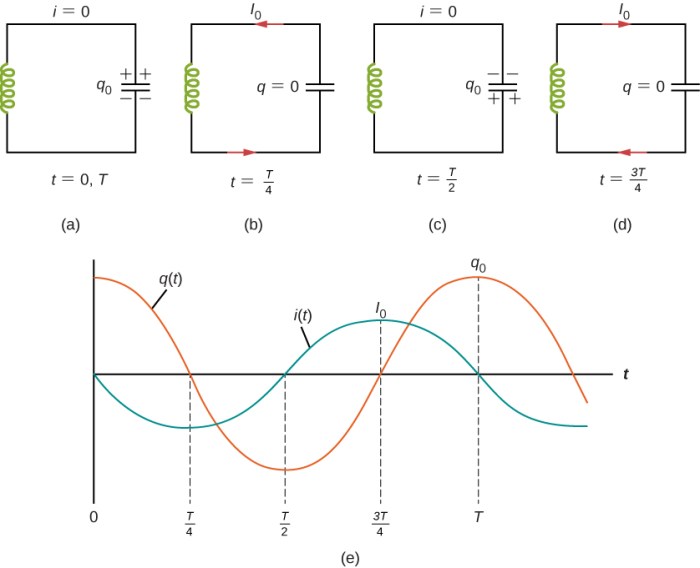The frequency of oscillation of a certain LC circuit is a crucial aspect of its behavior, determining its applications and performance. This exploration delves into the factors influencing oscillation frequency, mathematical analysis, experimental determination, and practical applications of LC circuits.
LC circuits, composed of inductors (L) and capacitors (C), exhibit resonant behavior at a specific frequency. Understanding this frequency is essential for designing and optimizing electronic circuits.
1. Introduction

LC circuits, consisting of an inductor (L) and a capacitor (C), play a crucial role in electronics. The frequency of oscillation in these circuits is a key parameter that determines their behavior and applications. Analyzing the frequency of oscillation helps engineers design and optimize circuits for specific purposes.
2. Factors Influencing Frequency of Oscillation
Relationship between L and C, The frequency of oscillation of a certain lc circuit is
The frequency of oscillation (f) in an LC circuit is inversely proportional to the square root of the product of inductance (L) and capacitance (C):
f = 1 / (2π√LC)
Increasing L or decreasing C will lower the frequency, while decreasing L or increasing C will raise the frequency.
3. Mathematical Analysis
The formula for calculating the frequency of oscillation is derived from the differential equation that governs the circuit’s behavior. The equation involves the charge on the capacitor and the current through the inductor, and its solution leads to the formula mentioned above.
4. Experimental Determination

The frequency of oscillation can be measured experimentally using an oscilloscope. By connecting the oscilloscope to the LC circuit, the waveform can be observed and the time period (T) can be measured. The frequency is then calculated as the inverse of the time period: f = 1/T.
5. Applications
LC circuits with varying oscillation frequencies find applications in various fields:
- Electronics:Resonant circuits for tuning radio receivers and transmitters.
- Telecommunications:Filters for separating different frequency signals.
- Instrumentation:Oscillators for generating precise frequency signals.
6. Advanced Considerations: The Frequency Of Oscillation Of A Certain Lc Circuit Is
Several factors can affect the stability and accuracy of oscillation frequency:
- Component tolerances:Variations in L and C values can lead to frequency deviations.
- Circuit losses:Resistance in the circuit can damp oscillations and reduce frequency.
- Environmental factors:Temperature and humidity can affect component values and thus the frequency.
Techniques like negative feedback and temperature compensation can be employed to improve frequency stability.
7. Design Considerations

To design LC circuits with specific oscillation frequencies, engineers consider the following:
- Component selection:Inductors and capacitors with appropriate values and tolerances.
- Circuit topology:Different circuit configurations can influence frequency.
- Simulation and testing:Using simulation tools and experimental testing to verify and optimize designs.
Question & Answer Hub
What is the significance of oscillation frequency in LC circuits?
Oscillation frequency determines the resonant behavior of LC circuits, allowing them to selectively filter or amplify specific frequency components in electronic signals.
How does changing inductance or capacitance affect oscillation frequency?
Increasing inductance (L) decreases oscillation frequency, while increasing capacitance (C) increases oscillation frequency.
What are some practical applications of LC circuits with varying oscillation frequencies?
LC circuits are used in frequency filters, oscillators, and resonant circuits in electronics, telecommunications, and radio frequency applications.